From Chalk Dust to Crash Videos, These School Moments Vanished Without a Sound

School used to feel like its own little world, one with chalk-streaked blackboards, clattering typewriters, and lessons you could smell before you saw them. Some parts were awkward, others surprisingly comforting, but most of them happened without anyone realizing they’d someday disappear. We lined up for screenings, clapped erasers as if it were a privilege, and watched videos that scared us straight. It all felt normal then.
But those everyday moments have quietly faded, replaced by screens, policies, and a different kind of classroom altogether. What was once routine now feels almost mythical. If you remember even half of what’s on this list, you were there for a version of school today’s students will never know, and maybe never believe.
1. Smoking in the Bathrooms
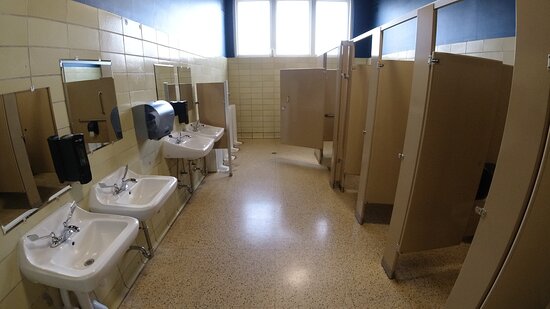
In many schools before the 2000s, the bathrooms were more than just a place to wash your hands. They became a hideout for kids trying to sneak a cigarette between classes, a space where the rules felt looser. Students huddled in the last stall, flicking lighters and puffing nervously while keeping an ear out for footsteps. The air was thick with smoke, and scorched toilet seats or ash-filled sinks were easy to find. Teachers sometimes looked the other way, especially if they had bigger problems to deal with. For some students, it was rebellion. For others, it was routine.
That kind of freedom has vanished in today’s schools. Surveillance cameras, motion sensors, and zero-tolerance policies make smoking indoors nearly impossible. Even cigarettes themselves have been replaced by vape pens and flavored cartridges. While vaping brings its own challenges, it lacks the gritty feel of those smoky bathroom rituals. For kids who lived it, the tiled walls, whispered jokes, and echo of a flicked lighter still linger in memory, just like the smoke once did.
2. Home Economics
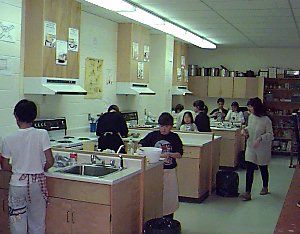
There was something quietly satisfying about learning how to cook, sew, and balance a checkbook in the middle of the school day. Home economics class smelled like cake batter and starch, and the rhythm of clinking measuring cups or humming sewing machines filled the room. Students learned to make grilled cheese, hem pajama pants, and write out grocery budgets by hand. It wasn’t flashy, but it felt real. The class taught life skills without calling them that, and for many students, it was the first time school felt directly connected to the adult world. Some found joy in the independence of planning a meal or ironing a shirt just right. It gave kids who struggled in academic subjects a chance to succeed with their hands and their instincts.
Today, home ec has either vanished or been reshaped into vague electives with names like life skills or family studies. The focus has shifted toward theory or digital tools, and fewer students graduate knowing how to sew on a button or cook something from scratch. Budget cuts, standardized testing, and changing priorities pushed this class off the schedule. But for those who remember it, home ec was a gentle introduction to growing up. It didn’t just prepare you for adulthood, it made it feel approachable.
3. Shop Class
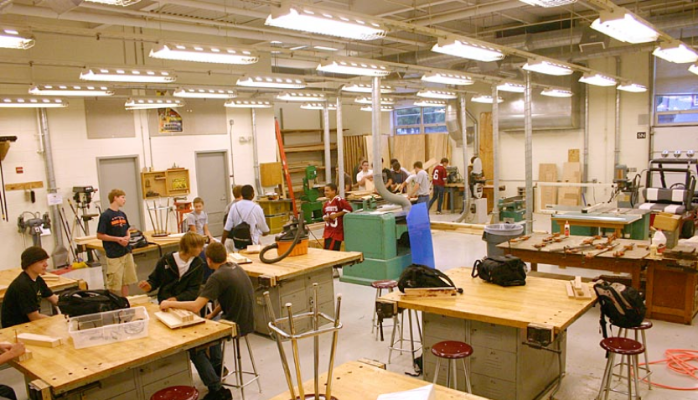
The moment you stepped into shop class, it felt different from the rest of the school. The air smelled like sawdust and machine oil, and the buzz of drills or the clang of hammers gave the space its own soundtrack. Students built birdhouses, footstools, and keychains, learning how to measure, cut, and assemble something from scratch. There was pride in making something with your hands, even if it came out a little crooked. For kids who struggled in math or English, shop class offered a place to feel capable and focused. Safety glasses were mandatory, and accidents happened, but that only added to the sense that what you were doing mattered.
These days, most schools have done away with shop class. It was gradually edged out by liability concerns, tight budgets, and an increased push toward college prep and computer-based learning. While robotics and coding are valuable, they don’t offer the same physical satisfaction as sanding a piece of wood or welding two pieces of metal together. For those who remember it, shop class was more than an elective. It was a place where effort had weight and substance, and where you left class with proof of what you had made.
4. Scoliosis Screenings
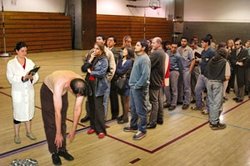
Once a year, students were pulled out of class and lined up in the nurse’s office or the gym for scoliosis checks. You were told to bend over and touch your toes while someone, often the school nurse or gym teacher, ran their hand down your spine to check for any curvature. It was quick, slightly awkward, and rarely explained in much detail. Shirts were lifted, backs were exposed, and classmates did their best not to giggle or stare. The whole process felt routine, like getting your vision tested or standing in line for vaccinations. It wasn’t traumatic, just one more thing schools did to keep tabs on your health.
Today, those screenings have quietly disappeared from many schools. The assumption is that pediatricians will handle it during regular checkups, but not all families have access to consistent medical care. What used to be a simple early warning system is now missing from the school day. The absence may not seem obvious until a problem goes unnoticed. For students who grew up with it, the memory is strangely vivid, cold gym floors, the quiet line, and the moment someone’s hand paused on your back just a little too long.
5. Hearing Tests

At least once a year, a nurse or technician showed up with a clunky gray machine and a pair of oversized headphones. Students were pulled one by one into a quiet hallway, office, or empty classroom for a quick test. You were told to raise your hand when you heard a beep, left or right, and then sat in silence, waiting for the faint tone to guide your response. The headphones smelled faintly like plastic and disinfectant, and the test itself felt oddly official, like a secret grown-up moment in the middle of the school day. It was one of the few times the world got quiet, and you were asked to listen, really listen.
Most schools no longer offer regular hearing screenings. Budget cuts, staffing shortages, and changing priorities have shifted the responsibility to parents and outside providers. However, not every family has easy access to preventive care, which means that subtle hearing problems can often go unnoticed. The simplicity of the test made it easy to administer, but its subtle impact was significant. For students who remember the routine, the beeps, the hand raises, and the brief hush were oddly comforting. It was a moment when the school paused and paid attention to something small but significant.
6. The Pledge of Allegiance
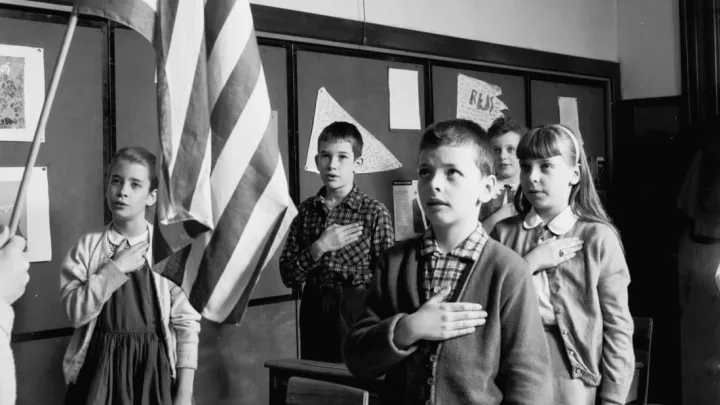
Every morning began the same way. The teacher stood at the front of the classroom, or a voice crackled over the loudspeaker, and the class rose in unison to face the flag. Right hands covered hearts, and voices recited the Pledge of Allegiance with varying levels of energy. Some students knew every word and spoke them with pride. Others mumbled through sleepiness or recited it automatically, their minds already on lunch or the first period bell. Still, it was a shared ritual, a pause that marked the start of the day across classrooms nationwide.
Today, the pledge is optional in many schools, and in some districts, it has been completely phased out. Legal rulings, cultural shifts, and a broader understanding of individual rights have changed the role of patriotic exercises in public education. Some students still stand and recite it, while others sit quietly or opt out altogether. For those who grew up with it, the pledge was not about politics—it was about routine. It was one of the first group behaviors kids learned in school, a symbolic moment that helped make the classroom feel like its own little society.
7. Cursive and Penmanship Lessons
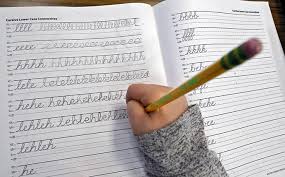
There was a time when writing in cursive felt like a milestone. Students filled pages with looping letters, practicing rows of capital Gs and lowercase zs until their hands ached. Teachers walked the aisles, checking slant, spacing, and neatness while correcting pencil grips along the way. Your handwriting was part of your grade, and learning to sign your name felt like an introduction to adulthood. Some kids loved the order of it, while others dreaded the red pen circling a messy page. Either way, it was something everyone had to learn.
Now, cursive is disappearing from schools entirely. Many students never practice it, and some cannot read it at all. Keyboards, tablets, and voice-to-text tools have taken over, leaving less time for teaching what was once considered essential. While technology offers convenience, it also erases a kind of personal touch. A handwritten letter or journal entry carries something a typed document does not. For those who grew up connecting letters by hand, cursive was more than penmanship. It was a quiet exercise in patience, focus, and individuality.
8. Typing on Real Typewriters

Before laptops and autocorrect, typing class meant sitting down at a clunky metal machine that made your fingers work for every word. The keys clicked loudly, each letter required real pressure, and mistakes could not be deleted—you either used correction tape or started over. The room was filled with the rhythmic clatter of students trying to master the home row, eyes focused on drills like “The quick brown fox jumps over the lazy dog.” You learned to type not by instinct, but by repetition and muscle memory. The carriage return dinged at the end of every line, and that sound became its own kind of reward.
Today’s students learn to type on sleek devices with screens that blink and suggest words before they’re finished. Speed is the focus now, not form. While efficiency has improved, the physical discipline of typing on a real machine is gone. Typewriters forced you to slow down and think before striking a key. There was no going back once the letter hit the page. For those who remember it, the experience was loud, imperfect, and strangely satisfying—proof that learning could be both practical and hands-on.
9. Filmstrip Projectors
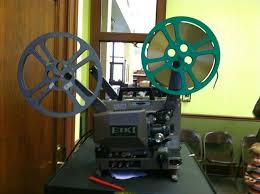
When the classroom lights dimmed and the projector clicked on, everything slowed down. A grainy image appeared on the screen, often paired with a cassette tape that guided the narration. At regular intervals, a soft beep signaled someone—usually a student—to turn the knob and advance to the next frame. The images were usually simple diagrams, historic photos, or cartoon scenes tied to that day’s lesson. It was low-tech and sometimes boring, but it gave the class a moment to sit back and absorb. Watching the same visuals together, in sync, felt different from reading a textbook alone.
Those old projectors have long been replaced by smartboards and video streaming. Today’s lessons come in high-definition and move quickly, often controlled by a remote instead of a student hand. The experience is more polished, but less interactive. Filmstrips may have been slow and prone to glitches, but they invited participation. There was a rhythm to the clicking, a shared silence between frames, and a kind of charm in their simplicity. For students who remember them, those flickering images were just as much a part of the classroom as chalk dust or desk rows.
10. Clapping Erasers Outside
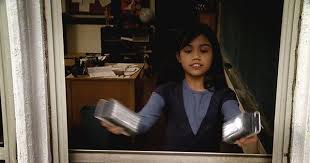
Getting asked to clap the erasers felt like a reward, not a punishment. You stepped outside with two chalk-covered blocks and smacked them together until white dust billowed into the air. Some kids made a game of it, seeing who could make the biggest cloud or leave with the dirtiest hands. It was messy and loud, but oddly satisfying. The smell of chalk mixed with fresh air, and for a few minutes, you were out of class and doing something that felt important. It was one of the few school tasks that gave you a sense of control.
Now that chalkboards are gone, so is this simple routine. Classrooms use dry-erase boards or digital screens, which leave no dust behind and no reason to head outdoors. There is nothing to clean, nothing to clap, and no excuse to step outside during a quiet stretch of the day. While the job may have seemed trivial, it offered a brief moment of freedom. For students who did it, the memory is strangely vivid, dust flying in the sunlight and the small joy of being trusted with something that left a mark.
11. Pull-Down Maps

Every classroom used to have a set of curled-up vinyl maps mounted above the chalkboard, waiting to be snapped into action. With a sharp tug, the teacher would pull down a map of the United States, the world, or an ancient civilization, and students would squint at the colored shapes and faded borders. Sometimes the maps were outdated, but no one cared. They were part of the visual rhythm of the classroom. If you were lucky, you got to help roll one back up, trying not to let it snap too fast or get stuck halfway. The maps were imperfect but felt important.
Now, digital tools have replaced them entirely. Teachers project up-to-date maps from laptops or click through interactive atlases on smartboards. The visuals are cleaner and the information more accurate, but the tactile presence is missing. You no longer see a map hanging above the board day after day, its corners curling from years of use. For those who remember them, pull-down maps were more than teaching aids. They were daily reminders that the world was bigger than the classroom, and that it could be revealed with a single snap.
12. Library Visits as a Class
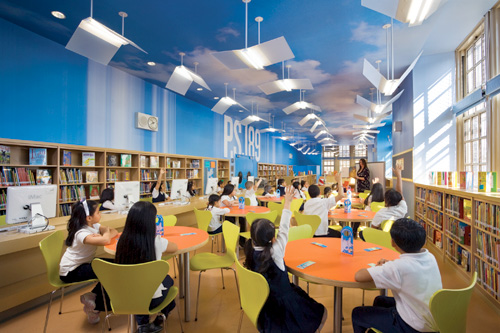
Once a week, your entire class walked quietly down the hall to the school library. The room smelled like old books and carpet glue, and the atmosphere was always calmer than the rest of the building. Some days, the librarian read aloud or introduced a new section of the shelves. Other times, you were free to explore on your own, flipping through picture books or settling into a beanbag with something from the mystery section. You might wait your turn at the card catalog or get excited when you found a book that still had your friend’s name on the checkout slip. It was a different kind of learning, slower, quieter, and more personal.
These days, many schools have scaled back library time or removed it altogether. Some libraries have been repurposed into testing centers or computer labs, and others operate without a full-time librarian. Digital reading programs may be more efficient, but they lack the sense of discovery that came from browsing the shelves. For those who remember class library visits, it was more than a change of scenery. It was a place where reading felt like your own idea, not an assignment, and that made all the difference.
13. TV on a Rolling Cart
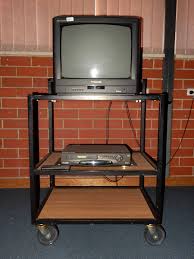
The moment that television rolled into the room, everything changed. It sat strapped to a tall metal cart with cords dangling, and every student knew it meant one thing, you were not doing regular work today. Whether it was a documentary, a movie adaptation of a book, or a safety video, no one really cared. The lights went off, the VCR clicked, and everyone settled in. Sometimes the teacher fiddled with the tracking or had to rewind the tape, and sometimes the video cut off before the good part. Even with all the glitches, it felt like a treat.
Now, video is streamed instantly from laptops or smartboards, woven into lessons without ceremony. The magic is gone. There is no cart, no anticipation, and no change in atmosphere when a screen lights up. Watching a video is just another item on the schedule. But for students who remember it, the rolling cart was more than equipment. It was a signal, a rare pause, a shared moment, and a little pocket of unexpected fun in the middle of an ordinary day.
14. Paper Bag Book Covers

At the start of every school year, once you picked up your textbooks, the next step was finding a grocery bag to wrap them in. You folded the brown paper around each book like a present, creasing the edges and taping them down until the fit was just right. Then came the fun part, decorating. Some kids kept theirs neat, while others filled the covers with doodles, stickers, band names, or the initials of a secret crush. It was one of the few things in school that felt completely your own. And as the year wore on, the covers wore down with them.
Today, paper bag book covers are mostly a thing of the past. Many schools have switched to workbooks, consumables, or digital texts that don’t need protecting. There’s no reason to wrap something you’ll never reuse. But for those who remember it, covering your books was more than a chore. It was a small ritual that marked the beginning of a new grade, a clean slate in both senses. The wrinkles, drawings, and handwritten labels told a quiet story about who you were that year.
15. Animal Dissections in Formaldehyde
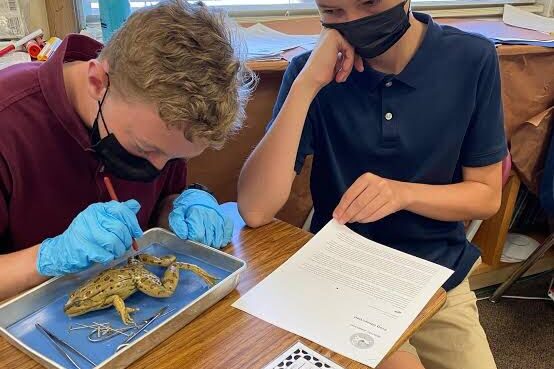
There was nothing quite like the day you walked into biology class and found trays lined up with frogs, fetal pigs, or other preserved creatures. The smell of formaldehyde hit before you even took your seat. Gloves were handed out, scalpels were set down, and even the most fearless students hesitated before making the first cut. Some leaned in with curiosity, others kept their distance, and a few turned green at the sight of organs pinned open. Whether you were fascinated or horrified, the experience left a lasting impression.
In many schools, that rite of passage is gone. Concerns about cost, ethics, and student discomfort have led to the rise of virtual dissections and digital lab simulations. These tools are cleaner and easier to manage, but they lack the intensity and weight of the real thing. Dissection was never just about anatomy, it was about confronting something unfamiliar, learning how to observe, and managing your reaction in the moment. For students who did it, the memory is sharp and sensory, right down to the snap of latex gloves and the sharp scent in the air.
16. Recess Equipment with Questionable Safety
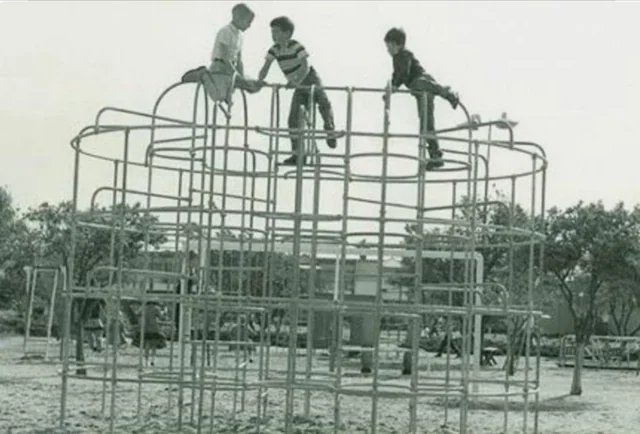
Recess used to feel like a thrill ride. Kids climbed metal jungle gyms that burned your hands in the sun, swung from monkey bars placed high off the ground, and flew off seesaws when the other side dropped too fast. The merry-go-round spun with reckless speed, and no one wore helmets or thought twice about falling on the blacktop. You got scrapes, bruises, and maybe even a loose tooth, but you also felt free. Supervision was minimal, and the rules were few. You figured things out the hard way.
Modern playgrounds are designed for safety. Plastic structures sit low to the ground, cushioned by rubber surfaces and surrounded by signs explaining the proper way to play. While fewer injuries is a good thing, the shift also changed the spirit of recess. The old playgrounds offered more than risk, they gave kids a place to test limits and solve problems without adult intervention. For those who remember climbing too high or jumping too soon, it was chaotic, sometimes painful, and completely unforgettable.
Wait, That Was Really School?
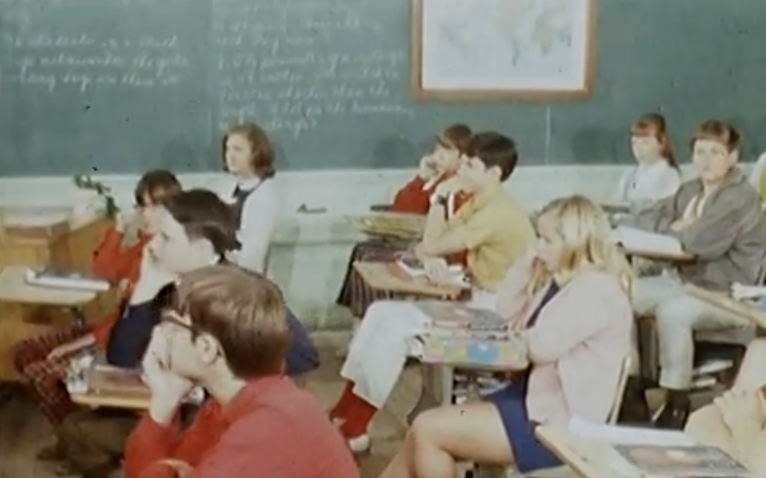
Looking back, it is hard to believe how different school once felt. The days were filled with chalk dust, paper bags, buzzing machines, and strange rituals no one thought to question. Some of it was messy, awkward, or even mildly dangerous, but it gave school its rhythm. These moments were not measured in test scores or GPA. They were found in eraser clouds, pledge recitations, and the click of a filmstrip advancing one frame at a time. It was not perfect, but it was full of texture.
Much of that texture is gone now. Modern classrooms are cleaner, quieter, and more efficient, but they have traded something along the way. The quirks and odd routines that once defined a generation of schoolkids have faded without ceremony. If you were there, you remember, not because you wrote it down, but because it lived in the sounds, smells, and small freedoms of the day. These were the things that made school feel real, and in their absence, what remains feels just a little more distant.


